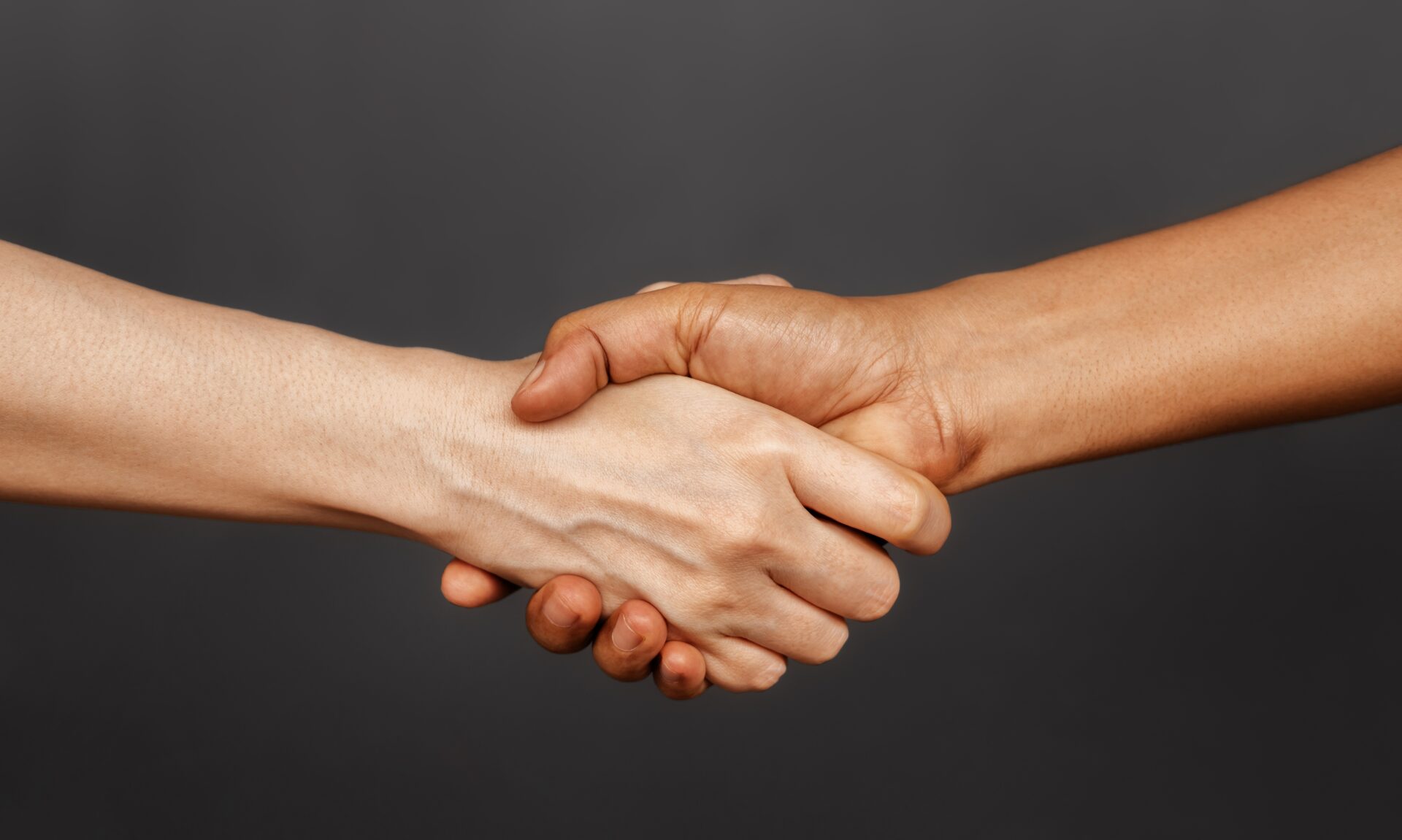Gratitude is not only part of a virtuous life but, in my opinion, the single most influential brand alignment strategy.
Stay with me here while I reference some accomplished professionals who know what they are talking about when it comes to the science of gratitude.
Neuroscientists have proven the expression of gratitude produces chemicals in the brain—dopamine, serotonin, and oxytocin— that make people feel peaceful and happy. Robert A. Emmons, a renowned psychology professor at the University of California, is considered by many to be the world’s leading scientific expert on gratitude. He and his associates have conducted numerous studies showing the relationship between gratitude and feelings of happiness. In his book, Thanks! How the New Science of Gratitude Can Make You Happier, Emmons suggests you intentionally integrate gratitude into your daily life, noting that it heals, energizes, and has lasting effects on your well-being.
Gratitude at the Center of Your Customer Journey
Integrating genuine gratitude into your business will amplify the well-being of your organization as well. Moreover, making it the foundation of your brand alignment will build enduring customer relationships while driving lifelong profits. Being grateful should be at the core of your CX if you want to differentiate yourself and establish your brand as a trusted partner.
How often does your client, customer, donor, or patient base feel genuine appreciation? Printing “Thank you for your business” on an invoice doesn’t even come close, nor does hanging a sign in your store saying “We appreciate our customers.”Sorry, but that is all really old-school BS.
You need to immerse yourself in your customer journey, and ask what gratitude should look like to the people who keep your business flowing. We all like to feel we are appreciated. When we begin feeling like we are being taken for granted, we make changes.
What Would it Cost to Replace Your Customers?
What would happen if every one of your customers left you today? What would it cost for you to replace every single one of them? How long would it take? Take them for granted and it just might happen. I’ve watched it happen
Allow me to share a story I include in my book, Brand ON!
The owner of a small family catering business I frequently used had experienced solid growth over 10 years and built a customer base of approximately 200 loyal regulars. Things were rocking for this entrepreneur, and he could do no wrong, so he began expanding into other areas. Like any small business, the ever-perplexing 80/20 theory was in play, and 20% of his customers were generating 80% of his annual sales. As usually happens, over time, competition creeped in, along with changes in leadership at a few of his top 20% customers, and all of a sudden, he found himself losing a lot of business and financially upside down.
His immediate reaction was to put more money into advertising. His business is located in a smaller market, so TV, radio, and billboards were not overly expensive. He loaded up on his media spend and really started pushing his business. It was not working, so he spent more money changing the creative and the messaging. It did not move the needle either. Nothing he tried was working, so he reached out to me for help.
We had helped him over a decade earlier by totally realigning his brand, so I knew he had a solid baseline for success. I sat down with him and listened to his story for over an hour. He was visibly shaken. Sales had dropped 70%, and he had increased expenditures beyond reason in an attempt to resuscitate his market. It was easy to see the personal pressure was taking a physical toll, and I hurt for him.
Once he was finished, I asked him only one question: “When was the last time you thanked your customers?” He looked at me like, hey man, I just poured out all my business and life challenges and you have the balls to ask me when is the last time I thanked my customers? From his eyes I read, I always thank my customers.
Actually, he had not said a word in response to my question. He was numb and probably a bit upset with me. I repeated myself, “When was the last time you thanked your customers?”
He then verbally stated the obvious, “I have trained my staff to always say thank you when we are leaving any catering event.”
I knew that would be the answer. It always is. Every business owner or leader thinks they thank their customers, but do they really? I told him he was going to build his business back in three months and, by the end of the year, would be rocking at original levels plus some additional growth. He looked at me like I was smoking something and said, “How are you going to do that?” I told him I was not going to do it; he was. Word for word, here is what I recommended:
“First, assemble a list of your customers in descending order from the biggest spender
to the lowest. There will be a natural break somewhere around the top 20%, where there is a drastic falloff in annual sales volume. Draw a line there. Find a company that will print custom aprons for you and put your big logo on them.” (A decade earlier, we had created a fun logo for him that captured his personality, and everyone loved it.
It had actually become a well-loved icon around town.) “Buy 50 of them in white, printed with your iconic logo, then have your team gift wrap them in your company colors with a nice bow on top.
You personally start at the top of your list and go see each customer. Do not tell them you are coming. Just arrive at their office, and tell the receptionist you are there to bring them a gift. When you have a wrapped gift in hand, there are very few times you will be turned away, and if you are, tell the receptionist you will come back another day, but do not leave the gift.” Remember, this is a smaller city, so most everyone knows this guy.
By this time, he really thought I had lost my marbles. He was expecting something far more magical from the brand guru. I encouraged him to keep taking notes. “When you get in front of your customer, simply tell them how much you have appreciated all of their past business and that you just wanted to stop by and say thank you.
They will respond with an expression of shock, followed by a big smile. At that time, shake their hand, and walk out. Do not, under any circumstance, talk business. If they say they have an event coming up that they want to talk to you about, tell them you appreciate it but you will come back to see them at a convenient time. Do not, under any circumstance, take an order. Do not lose the shock value and the genuine feeling of appreciation they will experience.”
He said, “You mean, even if he or she wants to write up an order, I don’t accept it?”
I said, “Correct. But it is okay to show excitement about the order. Then, set a time to come back and see them to talk about it. You want to be emphatic that this visit is about appreciation, not selling.”
Less than a month later, I received a call from him. He was so excited he could barely talk. He told me the response had been so overwhelming he was having trouble keeping up with all the orders. He also said he got back two of his biggest customers immediately, and knew more were to follow. He noted that the energy and spirit around his team had gone through the roof and that everyone was doing their job better. To sum it all up, he said, “We have hope again!” This pattern continued, and his business grew more than he ever imagined possible.
Consider the Potential
Consider how impactful gratitude would be if you are in the high-dollar consulting world where any single client could be worth millions to your firm. The cost of acquiring and cultivating that client is enormous, and no matter how challenging they become to serve, they are far more cost effective than the one you have to start with from the beginning. Client acquisition is expensive and resource consuming. Wouldn’t you be better off spending more of those resources showing genuine appreciation to existing clients?
It amazes me how many businesses use the same old methodologies of appreciation that don’t really come across as genuine simply because they are so commonplace. Get creative with your genuine appreciation, and don’t fall into the normal trap of taking your clients for granted. It is so much more profitable to take care of your existing clients than it is to go find new ones. Or as the cowboys would tell you, “It’s much easier to catch the horse that’s in the barn than the one that’s running out on the open plains.”
If you already live your personal life from a place of gratitude, this mindful approach will be second nature. If you separate business from personal, then you probably don’t get it, because business is personal when it is in alignment. I have encountered a sizable number of what I consider mediocre leaders who don’t put gratitude at the forefront of their business. Most of the time, it is because they have the same issue being grateful in their personal lives, so it flows over into their business. It’s really hard to fake gratitude.
Gratitude Drives Energy
Genuine gratitude drives so much positive energy that I am constantly surprised by those who choose not to embrace it in their business. It’s long been known the closer you want to get to someone, the more you start expressing gratitude toward that person. That being the case, wouldn’t it make sense the same would work with your stakeholder groups, from investors to customers? Why not improve the lives of all of those involved with your business by integrating the synergy and enthusiasm of gratitude into your culture and customer experience? The sooner you do, the sooner you will bring your brand into true alignment.
If you are ready to amp up the power of brand alignment, get more information at https://brandoncolemanjr.com
And don’t forget to tune in to The Brand ON! Show, a podcast we drop every Tuesday morning.


